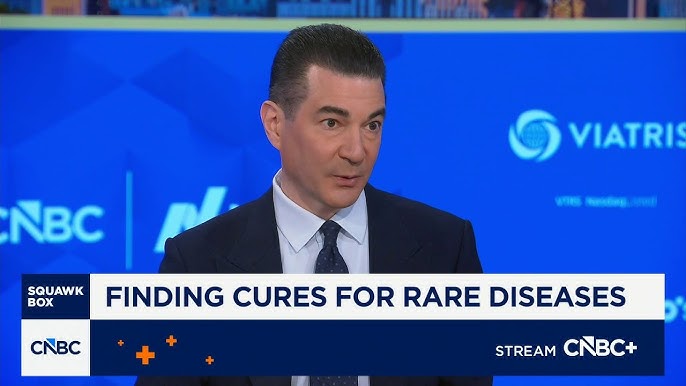
Dr. Scott Gottlieb on Finding Cures for Rare Diseases
Former FDA Commissioner Dr. Scott Gottlieb joins ‘Squawk Box’ to discuss the ongoing research and efforts at the FDA to find cures for rare diseases.…
Thought Leader: Scott Gottlieb

Sheila Bair, who witnessed the subprime mortgage meltdown firsthand, is expressing worry about the current state of the housing market. According to the National Association of Realtors, the median home price for existing homes was just $278,200 in August 2019. However, as of August 2023, that figure has skyrocketed to $407,100. Bair spoke to CNN in a phone interview, stating, “Talk about a bubble. That’s a classic supply-demand imbalance.” As a former federal regulator during the housing bubble of the mid-2000s, Bair believes that home prices today are displaying signs of being “bubbly” after years of historically low mortgage rates.
A housing bubble typically occurs when prices reach unsustainable levels. This can happen due to speculative buying, as seen during the subprime mortgage crisis when individuals unable to afford monthly mortgage payments were purchasing homes with minimal down payments. The bubble “popped” when home prices declined, leaving many homeowners owing more on their homes than what they were worth. Irrational exuberance, resulting in a buying frenzy, can also contribute to the formation of a bubble.
Bair recognized that the significant surge in home prices was predictable given the lower mortgage rates. However, she is uncertain if a correction will happen soon due to the current shortage of homes on the market. “If supply remains constrained, this could go on for some time,” Bair explained. The National Association of Realtors reported that there were only 1.1 million unsold existing homes on the market by the end of August, a 14.1% decrease from the previous year.
The combination of soaring home prices and high borrowing costs has made homeownership increasingly unaffordable for many Americans. Despite mortgage rates averaging at 7.49%, certain cities are still experiencing rapid increases in home prices. Realtor.com reported a 23.8% increase in the median home price in Los Angeles over the past year, as well as an 18.2% increase in San Diego, and a 15% increase in both Richmond and Cincinnati.
Bair believes that a minor deflation of the housing bubble would be beneficial, particularly for prospective homeowners. However, she reassured current homeowners, including herself, stating that even if home prices were to adjust slightly, people should not find themselves in a situation where they owe more on their homes than they are worth. Bair pointed out that the significant progress made in building equity in homes and stricter mortgage lending standards distinguish the current housing market from the mid-2000s crisis.
Jeremy Grantham, a legendary investor, shares Bair’s concerns about a housing bubble, predicting a potential 30% drop in home prices globally. Nevertheless, some Wall Street experts remain confident that home prices will continue to rise despite high mortgage rates. Goldman Sachs anticipates a 1.8% increase in US home prices this year, followed by a further 3.5% growth in 2024. CoreLogic also expects a 4.3% increase in home prices from June 2023 to June 2024.
While UBS acknowledges that home prices have reached “dizzying heights” in recent years, the bank only identifies Zurich and Tokyo as cities at risk of being in a bubble. Last year, nine cities were considered at risk. UBS classifies Los Angeles, Miami, Toronto, and Vancouver as cities in the “overvalued” category. Fannie Mae CEO Priscilla Almodovar expressed surprise that home prices have not been more affected by high mortgage rates, attributing the phenomenon to a lack of inventory.
Lawrence Yun, the chief economist at the National Association of Realtors, echoes this sentiment and claims that homebuyers should not anticipate a drop in home prices. Yun states, “There is not going to be a home price crash…When you have a housing shortage, home prices simply cannot decline in any measurable way.” Although a temporary decrease in prices is possible, Yun stresses that a “prolonged” drop of 10% to 15% is unlikely given the tight supply market.
Yun also warns against a scenario similar to what occurred in London, where skyrocketing prices limited homeownership primarily to the wealthy. He hopes that America does not follow the same path. The current housing market differs significantly from the pre-Great Recession era. Previously, reckless mortgage lending created an artificial demand surge, which eventually collapsed, leaving an excess of homes. Now, the housing market faces an imbalance with insufficient supply to meet the high demand. Yun asserts that inducing more supply is crucial to address this issue and mitigate social inequity.
Dr. Scott Gottlieb on Finding Cures for Rare Diseases
Former FDA Commissioner Dr. Scott Gottlieb joins ‘Squawk Box’ to discuss the ongoing research and efforts at the FDA to find cures for rare diseases.…
Thought Leader: Scott Gottlieb
Peter Zeihan: U.S. Navy Seizes Russian Tanker
The US Navy just seized a shadow fleet tanker that managed to slip past the naval quarantine around Venezuela. The tanker reflagged as Russian while…
Thought Leader: Peter Zeihan
Erika Ayers Badan: Surviving Company Failure
In this episode of WORK: Unsolicited Advice, Erika talks through what it really looks like to come out of the worst month of your career…
Thought Leader: Erika Ayers Badan

